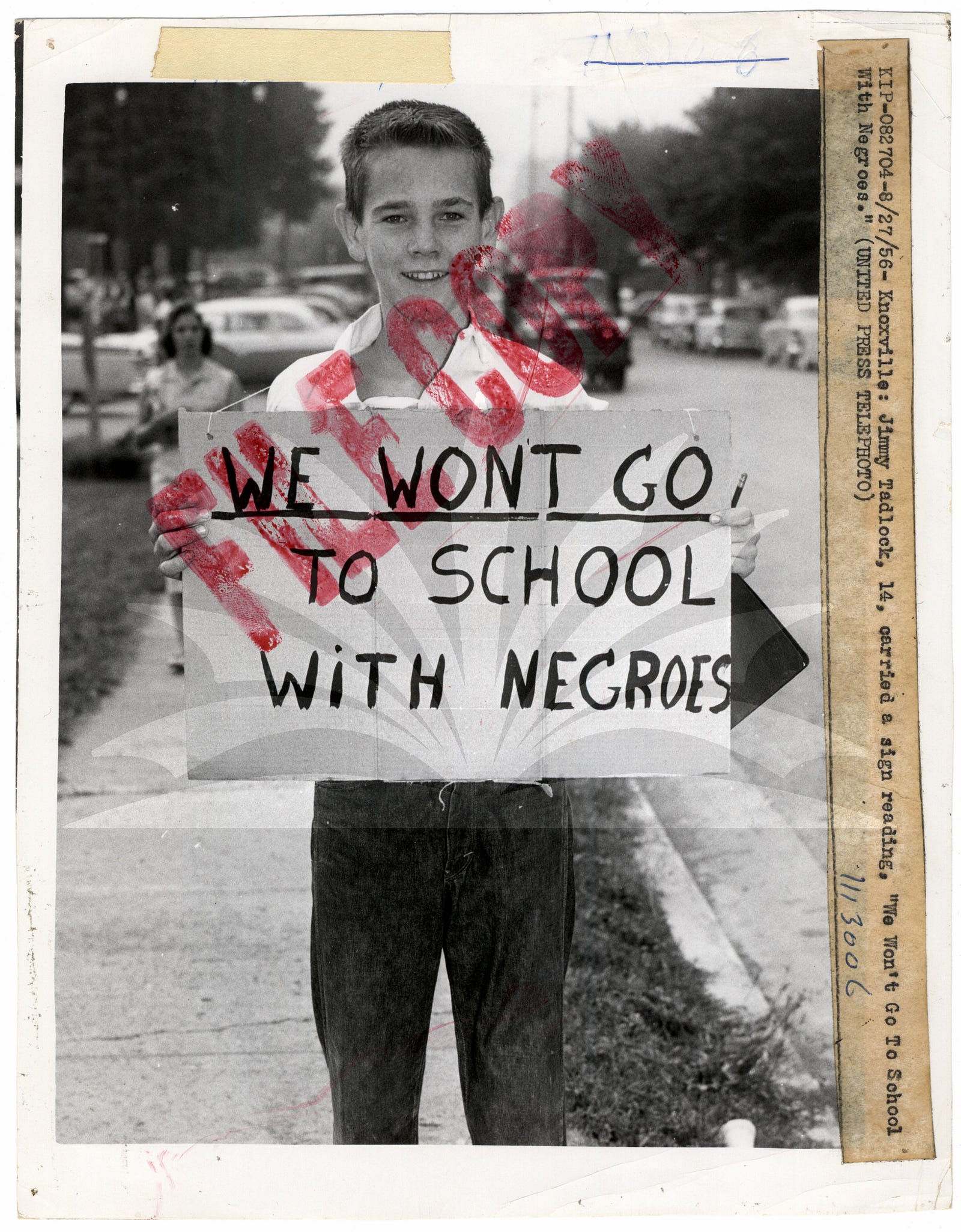Rosa Parks Interview
This interview of Rosa Parks went in depth to discussed what life was like in the 50s. Rosa Parks is known as the mother of the civil rights movement. She was arrested after she refused to give her seat for a white man. In this interview, she explains how the white occupy the majority of the front and the back of the bus was made for the black and even if theirs zero white passengers in the bus. Blacks are told to sit or stand in the back. She also cleared up the rumor of her being tired and not giving up her sit. It wasn’t that she was tired and not given up her, but she also had a problem with the bus driver before the incident. This source gave me a better understanding of the Montgomery bus incident that led to Rosa Park’s arrest that later became the iconic story in American history.
A student from Clinton High School

This is a photograph of a 14-year-old Jim Tadlock carrying a sign that states “We Won’t Go to School with Negroes.” Many southern whites protested against the whites and black kids going to school together. The parents of kids that went to school with black kids took their kids out of the school and enrolled them in all white private school. The term separate but equal also define, as long as African Americans have the same opportunities as whites but they have to be racially segregated. African Americans were seen as inferior by the whites and didn’t want to be in the same settings as them. This photograph goes to show that racism was not something you can be born with but rather you can be taught it. It is clear that his parents are making him hold the sign even though he might not know what it actually means.
Montgomery Segregated Busses
This stuff has been going on for a long time. To tell you the truth, it’s been happening ever since I came here before [World War II]. But here in the last few years they’ve been getting worse and worse. When you get on the bus they yell: “Get on back there”… and half of the time they wouldn’t take your transfer, then they make you get up so white men could sit down [when] there were no seats in the back. And you know about a year ago they put one of the high school girls in jail ’cause she wouldn’t move. They should have boycotted the buses then. But we are sure fixing ’em now and I hope we don’t ever start back riding….
They shouldn’t make me get up for some white person when I paid the same fare and I got on first. And they should stop being so nasty… We pay just like the white folks… [The bus companies] are the ones losing the money and our preachers say we will not ride unless they give us what we want…
By Anonymous Woman
Lee was a highly educated researcher from Fisk University in Nashville, Tennessee who conducted an interview with an anonymous African American woman while he was in Montgomery doing research about the boycott. The woman describes what segregated buses in Montgomery, Alabama was like for African Americans. She describes the situation as nothing that is getting better but worse and worse every day. During the interview, the woman mentions how African American or blacks were treated when they get on the bus. “Get on back there” was usually what they get yelled at when they make an entrance on the bus even though they pay the same amount as the whites. This excerpt is very important because I found much of this content to be very useful. It can be used to show what people been through during segregation and what it felt like instead of the newspapers or the book. This also creates imagery while reading her statement.
